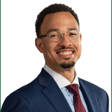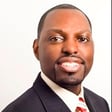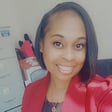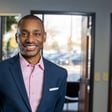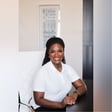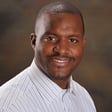Introduction and Podcast Overview
00:00:00
Speaker
I'd probably ask them to make me a mirror. Because at the end of the day, that is what human services analytics is all about. It's creating an objective surface, an objective mechanism for seeing how things are. But through that same mirror that shows us how things are, we can also play dress up in our child hearts and can imagine what could be.
00:00:29
Speaker
What's up world? Have you ever wondered what does my friend actually do at work? Because if so, welcome to Take Your Homeboy to Work Day podcast. I am your host, B.A., and here's what you can expect by tuning in.
00:00:44
Speaker
Each episode, I interview guests from different professions and dive into exactly what they do and how they came to be in their roles. I'll also have them open up about how they find fulfillment through their work. So for anyone interested in hearing the firsthand experience of a specific career, these conversations are your launching pad.
Understanding Human Services Analytics
00:01:07
Speaker
Today, we'll hear about Human Services Analytics. Now, Human Services Analytics uses data to help organizations improve outcomes for the people they serve. So for example, a state government may use it to identify and better understand health risks in a population, or a company may use it to identify issues that slow their employees' productivity.
00:01:34
Speaker
The purpose though is to work more efficiently, reduce waste, and make better decisions with the goal to help
Meet Dr. Jordan Argus
00:01:43
Speaker
Today's guest is Dr. Jordan Argus, Chief Research Officer at Crane R&D. Dr. Argus is an exemplary community leader and scholar. He leads with compassion, empowerment, and brotherly love. He then combines that with data analysis, critical thinking, and solutions to form his own superpower.
00:02:07
Speaker
Since 2014, he's been building crane that has over 50 doctors and 100 thought leaders total using data to solve our society's biggest issues. He's already left his imprint on topics such as reducing infant mortality, healing the brain from racial trauma, and ending the school to prison pipeline.
00:02:34
Speaker
The foundation for his work is to help everyone achieve their full potential and identity. I am elated that we get to learn from him today. Welcome to the show, Jordan. Thank you so much, Brandon. Glad to be here. Excited to be a part of the podcast and hopefully get some folks interested in implementation science.
00:02:54
Speaker
Of course, man, once I knew that your field tied in with the STEM, especially with your use of mathematics and software, I was excited to have you on as a guest. So thank you for bringing your knowledge and sharing your journey today.
From Artist to Analyst: Dr. Argus's Journey
00:03:08
Speaker
And so my first question is, I gave a brief overview of human services analytics and a little bit about crane and the work that you've been doing, but in your own terms, can you explain why you decided to go into human service analytics and then crane a little bit, please?
00:03:25
Speaker
Sure. So it all probably started back when I was still an artist. And the concept was, how do you explain an idea, a fact, a truth, a feeling in the most economical way? And so in art, you can do that with a special stroke or a particular color palette that you use to convey what you need to convey. In the business world and where so many other things happen, there's just
00:03:55
Speaker
a different language needed to communicate effectively. And so as I continued to just mature and grow in my career, learn more things, partner with more folks, mentor others, be mentored by others, as that happened, I just kept noticing that folks were using data. And as I just looked at it as a lame and I was like, I don't know if that lines up. I don't know if that makes sense. And so
00:04:20
Speaker
I continued to build upon my education, my experience, and try out some different fields that all shared something in common. And that was human services. Those fields, those careers that help people. So that might be education, might be corrections, might be health, allied health, might be, you name it, elder services, doing stuff with the Littles and the Munchkins. And ultimately that work led me into comprehending that you need data to
00:04:50
Speaker
clearly explain why something should be done or shouldn't be done.
Data Challenges and Organizational Decisions
00:04:55
Speaker
And the challenge was the data that was out there did not accurately do that. You had a lot of folks doing something, and I'll try to not get too deep in the weeds on stats, but doing something called crosstabs, where you say, this group of people has this thing happen this much, and this other group has it happen that much. And then you line a few examples like that up. And then people in the meeting will pull out their
00:05:20
Speaker
iPhone calculators and try to divide a number by a number and come up with a gotcha moment to a speaker, to a presenter to make decisions. And unfortunately, that's not good science. And so you had a lot of interventions fail to launch around the country, within Ohio, a little bit closer to home and saying that just knew that there was a need
00:05:45
Speaker
to turn all of this data and all this information that seems to be so tedious that folks would rather just kind of make their own conclusions, to turn it into something usable and something practical that points to this is probably the next logical step. And after that, if you get this sort of result, here's what you do to help that result last, or here's what you help to do to make that result improve.
00:06:10
Speaker
And so the career path has always had a focus on trying out different strategies and ideas and methods using some of these human services analytics techniques in different environments and at progressive levels of leadership and responsibility. Gotcha.
Influences and Career Path in Analytics
00:06:29
Speaker
And you mentioned how it was your first couple of jobs that introduced you to how people use data to try to make decisions. What were those jobs?
00:06:42
Speaker
I'll tell you, the very first official job outside of after school food service was working for a small business that did cell phone and car audio work. And so way back then, early in undergraduate,
00:07:05
Speaker
Way back then, I noticed that he had to figure out what things he needed to put out for customers to buy. And that kind of got my fancy going. I said, hmm, well, I noticed some things. What happens if I talk to people about what they like and why they like the things they like? Because very often on the business side of things, we do some pretty big leaps and the things that make sense to us, we assume make sense to others.
00:07:29
Speaker
we assume that the reason that we do something is the reason that others do. And the reality is very rarely is that the case. And so it got me focused on design and it got me focused on intelligent design in the scope of why do people want certain things? And it all tied back to identity. So then the next step in the career, I found myself more oriented towards human services. And I served as a mentor and a home-based counselor.
00:08:00
Speaker
for a lot of young men who are going through pretty tough situations. They were, you know, in 10 or more foster homes, you know, kind of before they even hit puberty. So you can imagine those kids probably had a lot of things to deal with. And then I also worked in that same agency with kids who were struggling with adoptions and their adoptions were very likely to disrupt and those kids would go back to becoming foster care kids with the devastation of I had a forever home and then it got lost.
00:08:28
Speaker
And again, identity, identity. So whether it's consumer identity, it's personal identity, it all connects. And with that, I realized that the focus on analytics, the focus on understanding how things work and why things are really the way they are became critical. As I got more under my belt from a scholarship perspective,
00:08:53
Speaker
I realized that it's not why things are where they are, it's why they are likely to be the way the things that they are. And so that likelihood factor became really critical to just a simple word, likely, not likely, realizing that you can assign causality to things. And for those who aren't stat nerds, causality is saying that this definitely happens because of that. Scientifically, we'd say there is a relationship between this thing and that thing.
00:09:23
Speaker
and we can rely on it to this extent when we're trying to explain the change that we're seeing in the thing that we're looking for the change in. So in total, Brandon, all of that experience very early on, having very little to do with stats and analytics, got me thinking of ways that I could help. And it went from helping an individual to helping a small group of individuals, an entire community,
00:09:53
Speaker
A state agency, a federal entity, creating models that could be picked up and, you know, applied anywhere in the country at any time, whether it's for five people or 5,000 people. And so I learned that to scale effectively, you have to use those analytics and those stats. Yeah. Because there's so many different people predicting those outcomes is tough.
Notable Projects: Ohio Lottery and Fatherhood Program
00:10:17
Speaker
I love the work that you're doing and bringing statistics to helping issues that are affecting, you know, I guess, the people who need it most. And so as you were building crane, what were some of those early projects that you were able to tackle
00:10:37
Speaker
to build your brand up and let people know that, hey, I'm your data guy to come help with youth who are going through the foster care system or infant mortality. What were some of those first projects you took on with Crane? Oh, sure. Brandon, well, the first project was actually in the private sector world. And it was an Ohio lottery game that was not doing really well.
00:11:05
Speaker
And as that game wasn't doing really well, the consumer, the lottery system and the lottery commission was concerned that the game would fail and that the folks who did enjoy playing the game and, you know, occasionally winning would go away and do something else. And so the lottery system actually helps to support a lot of great initiatives across the state. And so missing that revenue, it wasn't just about, you know, some entity not having some money.
00:11:32
Speaker
Instead, it was about how those dollars contributed by citizens to play could actually impact important programs in the communities. And so I said, ah, that's close enough. I can start there. And so that was the very first contract that Crane landed. And we were tagged in by a marketing firm. And the marketing firm believed that the method to get that game back to life and to have that revenue flowing back into those good programs
00:12:01
Speaker
was to get younger players because it was a game that was you know kind of well known to most of you played by by older residents of our state. Unfortunately the data did not vet that out and so we had very early conflicts and well do you even know what you're doing because we do this all the time and this is what we think is going to change it. Well the data said something different
00:12:25
Speaker
So their point of reference was four or five, six comments made by a few folks and executive staff with that particular project. Whereas the data we came back with was actually based on over 20 million points of information about those players and where they lived and what they might've had going on. And so with that,
00:12:47
Speaker
We actually pointed to a couple of alternate solutions that any one of them by themselves would work. But when you stack two or three of them together, you got a really impressive impact. And so they trusted us and went with and us as me, because way back then, Crane was just me at the kitchen table. They trusted at Crane and the end result ended up being awesome. The game is still around. It's grown. It's grown in popularity. It's grown in some market spaces. They didn't think it would grow.
00:13:16
Speaker
So, you know, that was, that was, you know, excellent in context. Cause it said, Hey, did something successfully and kind of getting used to figuring out what a deliverable is, what a scope is, just some of those basic functions of doing a knowledge based business where you're not selling a hard product, you know, like shoes or toothpaste, but you're actually selling information. And so with that, that next project really got us more into the space.
00:13:41
Speaker
of doing meaningful things that help other people. And so in this case, we were looking at the lived experiences of single fathers or men who were estranged from their children and did not want to be estranged from their children. And so the organizational founder and director was really interested in building a curriculum, a way to build skills and to help prepare fathers to effectively be in their kids' lives.
00:14:11
Speaker
to not just have a transactional relationship as many men in that in that condition have, where they purchase things and provide things, but instead to have a much richer connection with their kids and to begin thinking about legacy and to think about legacy, not just financially, but also as ideas, values. And so with that, we help to build a curriculum, build a training framework, help him build capacity, and then also to
00:14:40
Speaker
create a model for revenue cycle management so that he'd have a way to have income and he could eventually stop doing some of the other things he was doing because there was sufficient income to take care of what he needed to take care of to be able to do that work full time, which was his true passion. So that human services analytics applies in both of those capacities because to do the business problem for the lottery commission,
00:15:07
Speaker
The issue, the need, the desire was let's figure out what people have going on that might impact this decision making about playing the game. And in the fatherhood strategy, the human services needs came up and showed up a lot around how you help fathers build skills because you don't know what someone already knows and you want something to be engaging and so we
00:15:37
Speaker
facilitated some of our learning processes where we help his organization learn about what needs truly were. Because it was another example of, based off of his experiences as a father, he may have thought, everybody goes through this, or this is normal for everyone. When the reality was, there were actually some very different needs once we got him connected to the community. And then we helped him understand those needs
00:16:05
Speaker
and respond to those needs with an effective program.
00:16:09
Speaker
I love that will salute to you for taking on that work.
Evaluating Human Services Impact
00:16:14
Speaker
I love that you actually brought up the business side of what you do because my next two questions, I actually want to look at it with this business lens on. That's what I studied in college and I'm always interested to understand the money side of things, especially human services work where the end goal isn't always maximizing ROI because you have a human aspect to it.
00:16:36
Speaker
But as you were taking on, you can either use the lottery example or you can use the working with the program who wanted to help fathers become less estranged with their kids example. But how did you quantify the value of that work? So let's say with the the father's example.
00:16:55
Speaker
Was there, I guess, a dollar amount that you could put to staying, staying estranged would have cost them more than trying to get back in and building that relationship? How did you show the business side of that or the money or the quantity side of that? Oh, great question. So we certainly have perhaps some
00:17:18
Speaker
some more, uh, more acute examples on that, but I'll hang with you. I'll just go off of the fatherhood example. So in the fatherhood scenario, we needed to create a clear conversation about value and the value that was created through that you have to get a little bit dynamic. And so with it, we thought about what happens when you have a single parent household.
00:17:45
Speaker
In this case, for these estranged fathers who did not have custody, because that was a different group, for those who did not have custody, most of them were involved in a child support arrangement and were making good on that arrangement. Others found themselves in arrears. And so one of the program models was for those fathers who were in arrears. And for the fathers who were in arrears, the need was quite different because they were trying to prevent becoming temporarily incarcerated in county jail
00:18:15
Speaker
failure to pay which would have further compromised their ability to do any kind of payment if you lose your job because you can't show up because you're in county jail or for some of those jobs if you now have a fresh conviction on your record when they do an annual background check or quarterly background check depending on the industry that those men were in and so after we talked to the community we heard and learned from them what some of their critical outcomes were and then we thought about okay that's kind of the
00:18:44
Speaker
That's the baseline. That's the tier one. That's the bottom of the, you know, bottom of the thinking chain. So the next link in that chain was, well, what, what matters to the work we do and realize pretty quickly, we couldn't answer that yet, but we could answer the third tier of the third chain in that link. And the third chain in that link was what's important to the people who are going to pay for this. And so.
00:19:10
Speaker
In exploring what would matter to those folks, we thought about appropriate outcomes to family courts. One is fathers getting back in good standing. So that was one indicator. How often are folks able to get back in good standing and how much of that can we attribute to this program model? That told us that we needed to have inputs. A number of sessions folks would participate in. A number of initiatives that are
00:19:37
Speaker
that they would try on their own and how those could be reported back. Naturally, there's tests that you do, quizzes you do at the beginning, hey, where's your knowledge on this thing, on this topic? And maybe that topic had to do with some aspect of young child rearing, you know, because again, some fathers might have young children, some might have high school age or, you know, young adults or older. And so we were really thoughtful about what
00:20:05
Speaker
those who are most likely to have a child support situation where they were in that parenting spectrum. And so we were able to pull some data from some public sources. We were able to set and facilitate some focus groups behind the scenes for our client to identify what those things that they hear most from judges and other jurists
00:20:32
Speaker
Those things they hear most from child support enforcement agencies across the state. Those things they hear most from their co-parents. And once we identified those factors, we said, yes, they're really all about stability. There's some indicators of economic stability. So let's dive in deeper and put a number to those. So the cost of a person who is not insured needing to go for an emergency visit
00:21:00
Speaker
for something that's really not an emergency is typically X amount. And when these fathers are disengaged from employment, as many of them had the lived experience of being disengaged from their kids and disengaged from employment, some of them are recently released from a county jail in the state. We then talked about their frequency of medical care and how often they typically would have gone.
00:21:28
Speaker
That became important because that let in is another one of these indicators as we looked at what happens when you get full-time employment and you have basic health benefits. What happens when we get the parents set up with a medical home? What happens if we help those fathers lead the process of finding the medical home for their child so they're not just going to the local children's hospitals emergency room just so those fathers were going to? What happens when you actually set a pediatrician for your kids? And so in that process,
00:21:57
Speaker
And in also the conversation about moms being able to, in this capacity, moms being able to utilize fathers for short-term observation and care of kids instead of babysitters, we figured out a lot of different outcomes and we used some kind of challenge logic. And what challenge logic does, Brandon, is it helps you make sure you're making sense for whatever it is you're talking about. And so saying that,
00:22:26
Speaker
We looked at how much more things cost when you're poor. And when things cost more when you're poor, the reason for this is because you are unable to leverage scale. You can't necessarily go to Costco and buy a pallet of toilet paper. You might be buying, you know, individual rolls or a small eight pack of rolls. But when you can buy them by the pallet, you can get them for 40 cents a piece. When you buy them in a smaller quantity, you get them for $2.40 a piece.
00:22:56
Speaker
So you're paying an extra 500% on the cost of toilet paper. And so a lot of math goes into it, but all of that helped us feed our number two tier, our number two chain and link. So we knew what mattered to the folks who would be participating, needed to be engaging, it needed to feel relevant, it needed to feel meaningful. It didn't need to feel like a court complying program. And we knew what needed to be done at the top end
00:23:25
Speaker
for the folks who would fund it, which were likely going to be courts, nonprofit organizations, family organizations, and potentially even some other father advocacy organizations to help make a plea to have jail sentences stayed for men and arrears and to work on an alternate payment plan.
00:23:43
Speaker
for them to avoid jail, even if perhaps they'd missed court once or twice. And so saying that, all of that fed into what we needed to do in the program design, how long it needed to run for, how many sessions it needed to be, which modules needed to happen during each of those sessions based on an intake survey from the men who were going to be participating and showing up on, let's just say Thursday afternoon at XYZ Church.
00:24:09
Speaker
to ensure that it stayed very relevant. Well, by increasing the relevance, that set this up to have a very high level of participation, right? If you've got, let's say you've got a middle school student, you're probably not trying to spend five weeks learning about how to change diapers because your kid's in middle school. So saying that
00:24:33
Speaker
We used a lot of multifactor processes to figure out the right way to ask the right questions at the right time. And the analytics help you by pointing to what really is going to make sense to include and what's going to add the most value and what's going to add nominal value, which helps you make decisions about whether what is most important to you is how many sessions and saying someone comes to you for two years.
00:25:01
Speaker
Well, that's not really gonna, you know, that's not a relevant point of pride for courts because they want the problem solved quickly. That's not a practical thing for participants because they have lives and jobs and other things they need to attend to. And it also delays their potential for getting in good standing, which helps to preserve their opportunities for visitation and even potentially for shared parenting and eliminating some of that child support. And so with that,
00:25:31
Speaker
we were able to help identify the right duration of time and programs. We were able to structure the content of those programs to meet folks' needs. So now they're actually showing up. You don't have to have some restarted cycle because they missed a couple of sessions. Instead, they're just showing up. So
00:25:50
Speaker
Those approaches, those structures, even thinking about how you socially market effectively to different groups of folks became critical. And all of those things to get to your original point and to wrap that piece up, Brandon, are assigned a dollar value. They're assigned a dollar value for the benefit of the work, especially if it's work we've done where we are taking either some royalty or some percentage of gross revenue to offset the upfront payment or
00:26:19
Speaker
in the event that we are exploring the needs of their consumers, and we know, hey, if you have folks who are in this sort of situation, their likelihood to pay more than a certain dollar amount is very low. But if you can get to roughly this dollar amount, it is now competitive with other perhaps parenting programs that might be ordered by a court.
00:26:42
Speaker
and or it is comparable to supervision fees if they had to have state or county level supervision related to, you know, a nonpayment order. So we ensured that we stayed in the pocket with some market research skill sets and some human services analytic skill sets combining there to ensure that the decisions that our client made
00:27:08
Speaker
were well grounded in research and data, but it also allowed us to put a business structure around a human benefit and to identify how the state benefits to this extent, the household benefits to this extent, the community benefits to this extent with a dollar sign attached to each of those for each successful completion.
00:27:30
Speaker
Wow, you know, I love the explanation that you are giving, because oftentimes people think of data, data heavy jobs as just solely being about the numbers. But I love that human service analytics brings in that human capacity and
00:27:47
Speaker
brings that element to it also. And so earlier when I said that you lead with Brotherly Love, the way you were just describing that program, I could see how you wove that into the numbers that you were also seeing ultimately to get a better end product for those fathers. So I appreciate that explanation. I know you've probably had your hand into hundreds of other projects also. So what has been your proudest achievement or which project has made you feel the most powerful
00:28:18
Speaker
Is there another project you could like dive deep into and explain some of the work that you've been doing?
Tackling Social Inequalities Through Data
00:28:24
Speaker
Sure. So, um, one that we're actively working on, so you don't have to give it codename X right now, but that particular project is seeking to do something that hasn't been done before. You know, you find often that when something really amazing comes out,
00:28:43
Speaker
Organizations and agencies and businesses. Oh, we did a little bit of that a while ago. Exactly. Did a little bit of it. And it wasn't enough to make any change. Right. And so with that, we we've taken on a pretty monumental task. And so here in, you know, in in this city and in the surrounding metro area,
00:29:05
Speaker
we collected a pretty substantial amount of data. Some of it took a compliance counsel, happened to be a bit surly and be a bit shrewd, but it resulted in like over 65 records requests being fulfilled. And in those records requests, we looked at the difference between the apples to apples rate of black people experiencing a pain, a problem, a success compared to white.
00:29:33
Speaker
folks experiencing a pain and problem of success. And wherever the information was available, we also included brown folks, and we included any other nationalities or ethnic identities that were available to us. Also, we included male and female wherever possible. And in the cases we could, included in gender non-binary and other orientations and identities. Because again, it's all about recognizing the difference from identity.
00:30:00
Speaker
and also the commonalities. So saying that, the objective is to create a very clear picture of where we're starting as a region in terms of black outcomes compared to white outcomes. And this is everything from infant mortality, as you referenced a bit earlier, to economic achievement, to parody and criminal justice experiences,
00:30:28
Speaker
So the arrest rates and the stop rates ultimately can become in the future equal for black and white and not have astronomically more black people pulled over or stopped or charged or frisked or et cetera, which ultimately resulted in some of the increases in this incarceration, the increases in pleas, the increases in
00:30:50
Speaker
in commitments to short-term CBCFs, to prisons, to long-term supervision, to payment plans and restitution orders and all those things. All that could be drastically reduced. And the objective is to use this very clear baseline and to keep growing it every time new data is available for any of these over 700 indicators.
00:31:15
Speaker
I repeat that brand in 700 indicators about what's different, what's similar, what's hurting people of color more so than our white counterparts. And the work that this requires is the vast majority of this project. It's not just developing a dashboard. The dashboard is done. It's gorgeous. It's glorious. It's accurate. It does what it's supposed to do. But the work
00:31:41
Speaker
is actually then galvanizing hundreds and hundreds of stakeholders, nonprofits, city and county agencies, other governmental bodies, regular folks, getting folks to pull in the same direction. Right now we have a lot of competition, especially among black nonprofits and the small nonprofits. In the city of Columbus, as an example, there are over 6,500 nonprofits registered.
00:32:09
Speaker
One city, 6,500 nonprofits. That number continues to fluctuate and it's mostly seems to be going up here in the past several years. Throughout the pandemic, a lot of folks found something they were passionate about, had the time, jumped on the website, started a nonprofit. And so saying that, you know, as you work on what's meaningful to people and you work on closing the gaps, what are the big, huge, super high level outcomes?
00:32:36
Speaker
more black kids graduating high school on time. Even before that, more kids really prepared for a world that requires the explicit use of technology. Even before that, kids who are on the right path very young and are reading and practicing sight words and phonics and phonemics before they even show up in school. And even before that, you get to
00:33:04
Speaker
women who are able to engage in general health, let alone reproductive health in an equitable and positive environment. And so just simple high level thing, all of those things connect to one, but there's a lot of indicators of how things are going along the way. What if we find through the deep review of data that there's actually a relationship between
00:33:30
Speaker
a girl's body mass index in her likelihood of teenage pregnancy. What? What if we happen to find that there's some very strange but growing importance in how often someone consumes sugary drinks when they're in middle school and how likely they are to have a stroke in their 40s or 50s? So saying that, we're exploring a lot of subtle relationships like that that still kind of make sense.
00:34:00
Speaker
but also wild things, Brandon, things you would never imagine had anything to do with each other. And so that's where the analytics really shines and where we use some computational artificial intelligence that kind of takes some of our research brains and makes them work 24 seven behind the scenes through a computer software and which we've been developing. And so saying that, what if we find a relationship between
00:34:32
Speaker
the neighborhood that someone lives at, and in particular, how much sunlight comes through their front door every day, their likelihood of depression in their 30s and their ultimate likelihood of suicidality. And what if we could predict someone's likelihood to contemplate suicide 20 years in advance and can wrap services around them over a few month period, which helped to protect them from that likely suicidality.
00:35:01
Speaker
and help protect them from the stats now. Other crazy example, what if we could use some of these processes and some of the currently collected data and some future to collect data? And what if we could identify likelihood for, let's just say cervical cancer? What if we could predict that off of
00:35:30
Speaker
The volume of hairstyle changes someone has posted to their social media profile. And what if we could do something about it? And what if we could do that nationally, but what if we could do that locally at a neighborhood by neighborhood? So the challenge then comes, how do you help someone not think that you are absolutely out of your mind when you're telling them that there's some connection between them switching up their hairstyles every other week and using certain products for that
00:36:00
Speaker
And again, have folks not think you're absolutely nuts when you're knocking on the door. So with that said, I offer the concept of deep dive advanced research methodology. And so we're really proud of what it's already indicated about how well this region is doing on closing gaps across several different areas and dimensions and domains. But the real pride is going to come from getting organizations to partner and to agree
00:36:31
Speaker
that they are not as different as they need, they've needed in the past to believe. They can absolutely get funding and can even grow in their funding and in their fiscal structure. They can even grow when they partner together.
00:36:46
Speaker
Makes sense, makes sense. That's a big project to take on. You know, and I would love, I appreciate you diving into some of the work you've been doing. I want to ask you an abstract question now.
Reflections on Work and Inspirations
00:37:01
Speaker
So imagine that you are next to a painter or an artist, and they want to commemorate the work you do into a visual picture. What would you describe the artist to draw to explain what it is that you do?
00:37:17
Speaker
I probably asked them to make me a mirror because at the end of the day, that is what human services analytics is all about is creating an objective surface and objective mechanism for seeing how things are. But through that same mirror that shows us how things are, we can also play dress up in, you know, on our child hearts and can imagine what could be and maybe even imagine what should be.
00:37:47
Speaker
and begin dreaming about how to get there. Excellent. I got to know, who are some of your inspirations? Is there a thought leader in this world that you follow that inspires you? Or is there a book that you've read that inspires you? What are some of your inspirations as you're matriculating through your career? Yeah, I think one of the greatest conventions that I've ever been to was
00:38:17
Speaker
my mother's kitchen table. I've been to so many conferences, spoken at, led, just sat quietly and absorbed. Greatest wisdom came from my mom. The most practical, applicable things came from that. So she remains my hero. Scholars, I think that there's some very interesting researchers that are exploring some things right now.
00:38:45
Speaker
research can be a bit daunting, especially as you are just kind of getting into the idea of it. So I offer a couple of books that might be interesting, right? So one, which is no kind of services every five years or so. And it was first written almost 20 years ago, but it's called Freakonomics. Freakonomics is co-authored by Steven Levitt and Steven Dubner. Freakonomics,
00:39:13
Speaker
one of the authors is a University of Chicago economist, and they decided to introduce the world to kind of some advanced statistics by showing what we call kind of spurious correlations. Spurious correlation is something that really doesn't seem like it should make any sense. But in that, they get you imagining what relationships could be like, and then thinking about the likelihood of that relationship being a real thing,
00:39:43
Speaker
or being spurious. So an example of a spurious correlation, right? This is a true, statistically valid fact, but there's probably a better explanation than what I'm about to provide to you. Every time a Nicolas Cage movie comes out, the American divorce rate increases. The reality is, Nicolas Cage has nothing to do with what's going on in people's homes, but the prospect is
00:40:12
Speaker
You know, the data technically aligns. Now it is, it is simply what years did something come out or how many years did something come out? And let's just say, you know, of the past, since that man has been alive, let's just say he's got, you know, 20 years where a movie came out. And then there's 20 years of marriage data. That's a really easy, very non-complex statistic that's created out of 20 things on the left column and 20 things on the right column.
00:40:39
Speaker
Right, so it's a very spurious thing. But realistically, when you can prove what's happening by looking at thousands of different experiences or more than, you have some pretty phenomenal things. And so that's why I encourage folks to take a look at Freakonomics. One of the explorations had to do with, I believe,
00:41:07
Speaker
gang affiliation with the gangster disciples in Chicago. And the business structure applied by the gangster disciples is not too different from McDonald's, but it looked at what the relative wage that foot soldiers and varying levels of the organization would make if you were to treat it as a W-2 job based off of their actual received income
00:41:36
Speaker
related to their participation in the organization. So again, fascinating stuff. And it really got my mind going young. Another book that was important is a book called the Tao of Jesus. Tao is T-A-O.
00:42:00
Speaker
The Tao of Jesus. That book, again, it's written by a few folks, Joseph Loyoosa, Juan Lijo, Changxin Ji. So it's written by a few folks, but the concept of it is pretty fascinating because in the book, it compares what is so similar between Taoism
00:42:30
Speaker
and which are much older than Christianity, Asian philosophy structure, and Judeo-Christianity. And seeing the commonalities from an academic perspective that still has some heart is fascinating. Because once again, if the first book said, well, there's probably some possibilities out here,
00:42:52
Speaker
This is an example of a book that says, not only are there possibilities, a lot of things can make a lot more sense. And there's a reason that so much of human behavior is standardized. And there are certain things that we all pretty much accept. And why is it that we all pretty much accept these things? In the animal kingdom, we wouldn't accept those things. It'd be the opposite. So what makes us different?
00:43:15
Speaker
So fascinating books that again get you thinking about value systems and identity and personality because if your work does not reflect or connect to your value systems, you're going to struggle every day. And you're going to be so ready and so willing to jump at something else. Maybe it has an extra dollar an hour equivalent more.
00:43:35
Speaker
And that's not how you build a robust career. And that's also not how you build equity for yourself, for the organizations you work with or for, or may eventually hire you to consult or advise.
00:43:52
Speaker
I love that message you just gave. And that's why I definitely wanted you to come on with the Background in Human Services Analytics because you are combining finding a purpose with your skills and gifts with something that's necessary, which is like data analysis. So I love that explanation of finding your why because that is what's going to fuel you even through the tough times in your career. So I appreciate you sharing that with the audience.
Dr. Argus's Creative Expressions
00:44:17
Speaker
So now we're coming towards the end of the show and I wanna throw a curveball question at you. The goal is just for my listeners to learn a little bit about each of my guests and see another side of you. There is no right or wrong answer, but are you ready, sir? Of course, let's go.
00:44:37
Speaker
So imagine that you are an A&R of a music label and you've been given an unlimited budget to put together a song. And now you are allowed to have any three artists and then one producer or one beat maker to do the song. Who are the three artists and which producer are you putting onto your song? Oh, okay. I like it. I like it. So I'll tell you my, it's going to have to be a
00:45:07
Speaker
either a Neosoul or a Boombab. And so I have to give you one of each because I can't combine them. It'll just sound too funky. So I would need to get together. Alex Eisley is an incredible voice. I think she's Ernie Eisley's daughter, Caravan of Love. So Alex Eisley, get familiar if you're not. Great song called Good and Plenty. So I'd have to get Alex Eisley.
00:45:37
Speaker
You gotta have some Bruno, especially with the 70s thing they're doing. It's a good fit. So with an unlimited budget, because that man is expensive, get some Bruno. And this is for the neo soul track. But then also I would ensure we had necessary supports around and would engage Lauren Hill in it too. So those three, oh yeah, the opportunities for harmonization, incredible. I know I can hear them in my head already. Oh, I'm telling you, right?
00:46:09
Speaker
So, and with that, I would look to the producer, some vibes I've really enjoyed have come from Jack Dine. Jack Dine and Alec nicely do a lot together. Jack Dine, D-I-N-E. So, they've done quite a bit together, but it is similar to the, just in terms of vibe, it is similar to the flow of,
00:46:36
Speaker
It's hard to give a strong example.
00:46:39
Speaker
But, you know, the arrangers for Earth Wind and Fire and the Earth Wind and Fire sound, that they always stay true to their sound even when it sounded different, if that makes sense. You know, early Jodeci, you know, Mr. Dalvin and them. So, you know, where they created the iconic sound. And that's kind of what I think Alex is building. And I think she'd be supported in that by getting increased visibility of her work with a Bruno, but also having his automatic, you know,
00:47:08
Speaker
musical authenticity added by Lauren, and then having the production and the final delivery be immaculate with Jack Dine's involvement. So that'd be on the Neo Soul Tip. On the Hip Hop Tip, you know, you didn't say alive or dead, so I'm gonna assume alive, and that makes it easier. So thank you for saying nothing there. But on the Hip Hop Tip, you know, I tell you,
00:47:34
Speaker
There was a group called Slaughterhouse, and I used a lot of the work of Crooked Eye on work with young men. They had a song called Villain, where he is essentially hating, blaming, and forgiving himself for doing a bad job at being his own father, that I would have young men dive deep into. So saying, you know, write about. So saying that,
00:48:01
Speaker
there's some boom-bap stuff that if you could get this West Coaster into the boom-bap, oh, it'd be some serious business. But having given him his props, Jay's coming in there. So Jay-Z, also coming in, we're gonna pull in Nas, and we're gonna pull in KRS-1.
00:48:27
Speaker
That's four people. You can only have three, though. You got to cut one of them. Well, no, no, because, again, I had to do crookedized props. But he doesn't get to come to the show. He can be front row though, right? Got you. You can be front row. Got you. Got you. You can be front row. The crazy, nice, careless one on a DJ Premier Break B, potentially a DJ Alchemist B. But coming in, coming in hot, it'd have to be those folks.
00:48:53
Speaker
Respect, respect, respect. Thank you for answering that. I know sometimes that could be a tough one because there's so many options, but thank you for answering that. I would love to actually hear a song, both of those songs, the R&B Neoso song and the hip hop song. I would love to have those minds come to the studio to create something. So thank you. Awesome.
Contact Information and Opportunities
00:49:11
Speaker
Well, we have come to the end of the show. I would love for you to share, you know, where can people go to learn more about Crane? Or let's say I even have a listener who may want to use your services, how could they get in contact with you and learn more? Could you share a little bit about where people can find you or find Crane to learn more? Sure. So simplest way is crane, C-R-A-N-E dash
00:49:39
Speaker
rd.com. Easiest way. Find us, get a look at our team. Shamefully, we haven't updated that website in almost five years. Thankfully, we've been too busy and haven't had the time. So it still works and it still gives us the email. So don't worry about it. So that's one place. Me directly, especially if anyone has interest in, you know, participating in mentorship, being connected in a different way with their community, by all means,
00:50:09
Speaker
And now find me on LinkedIn. Dr. Jordan Argus on LinkedIn should pull up. There's a lot of folks who are connected with me. And so sometimes I have to bump someone to make room for someone new. But by all means say that you found me on the Take Your Homeboy to Work podcast and I'll make sure I make room for you.
00:50:29
Speaker
Salute. Well, thank you so much for coming on the show again. Thank you for all the work you're doing in the community. I appreciate that you are using your passion and gifts for what you are doing. I wanted you on to hopefully be an inspiration for somebody else who has a great mind and wants to channel their pursuits towards helping out the black and brown community or women. So salute to you for everything you're doing. I wish you nothing but success. And I hope you have a great rest of the day. Wishing you the best. Thanks for the opportunity.


